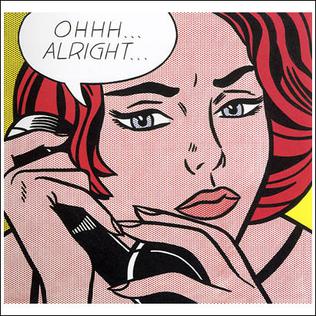Art has offered one of the primary sites of experimentation with new media and the forces of popular and mass culture. It has tended to dissolve the boundaries between the “low” culture of everyday people and the “high” culture of the elites, engaging both the experiences of consumerist mass audiences and counter-cultural criticisms. Taking up each new media as it forms, artistic experimentation has defied the expectations of being “beautiful,” “useful,” or “marketable,” and pushed the boundaries of what communication media have been “meant” to do. Along the way, it has altered ideas of what an artist does, what an art work is, and how art is to be consumed.
This course will examine the impact of new means of creating and disseminating art works and ideas through the 20th and 21st centuries – from print media, to photography and film, to social media—with the goal of better understanding the intersections between the mediatized cultures we live in and the artistic practices of today. We will look at how new media were understood and anticipated by theorists as they originated, and the works or experiments of artists who responded to them visually. We will conclude by exploring streams of contemporary art that arm themselves with technologies, both old and new, to ask questions about human futures in the face of climate change, Indigenous reconciliation and decolonization, and ongoing globalization.
While this course will investigate media in a roughly chronological order, its primary intent is not to create a historical timeline, but a deeper understanding of the effects of specific media on artistic practices (and vice versa), with an eye to the current world in which all of these media continue to introduce new capacities for humans to both connect and disconnect with each other in virtual and real worlds. This course addresses both students of media studies who are interested in the specifics of what has been designated the “art world,” and those who are looking at art practices in order to enrich their own.
This course will examine the impact of new means of creating and disseminating art works and ideas through the 20th and 21st centuries – from print media, to photography and film, to social media—with the goal of better understanding the intersections between the mediatized cultures we live in and the artistic practices of today. We will look at how new media were understood and anticipated by theorists as they originated, and the works or experiments of artists who responded to them visually. We will conclude by exploring streams of contemporary art that arm themselves with technologies, both old and new, to ask questions about human futures in the face of climate change, Indigenous reconciliation and decolonization, and ongoing globalization.
While this course will investigate media in a roughly chronological order, its primary intent is not to create a historical timeline, but a deeper understanding of the effects of specific media on artistic practices (and vice versa), with an eye to the current world in which all of these media continue to introduce new capacities for humans to both connect and disconnect with each other in virtual and real worlds. This course addresses both students of media studies who are interested in the specifics of what has been designated the “art world,” and those who are looking at art practices in order to enrich their own.

- Teacher: Dana Broadbent